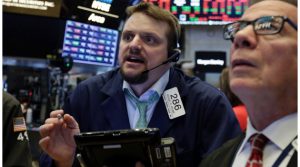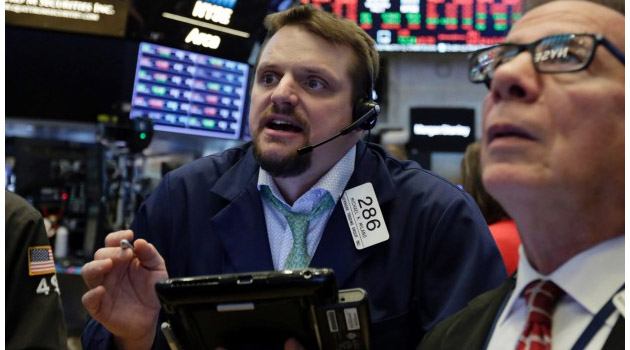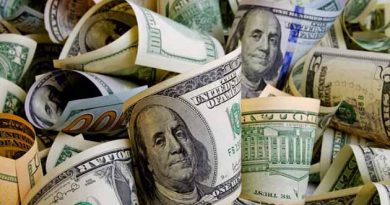Wall Street Rolls on, ASX Set to Open Higher

Sentiment continues to improve for US equity markets, and will feed through to the ASX, with the local sharemarket poised to open higher.
1. Wall Street continues to warm as S&P 500 finally wins a higher high:
The country’s benchmark indices extended their climb Thursday with the S&P 500 finally putting in for a higher high (above the April 18 peak) to shake off some of the doubt that still lingers after February’s volatility explosion. The Dow meanwhile offered up the most impressive record with a sixth straight daily advance which matches the longest stretch in six months. Yet where is this lift coming from? The headlines for the day hardly read like an explicit boon for shares and other local capital markets.
The US CPI figure notched an uptick, the anticipated effects of the Iran sanctions are being discussed and the fractures in various US relationships are being explored through various exposés. This is not exactly the mix of inspiration we look to revive a lasting bull trend. We are more likely seeing the influence of broad complacency sweeping back into the market. The question that all traders should ask: how permanent is this sense of stability and the subsequent need to reach for yield?
2. ASX 200 skew to financials, commodities may cap gains:
Another positive lead from North America may be supportive but the heavy skew towards financials and commodities in the benchmark S&P/ASX 200 index might make for underperformance as the commodities rally cools while dovish central bank rhetoric and softer US inflation data pushes back on global tightening bets.
Futures pointing to a 10-point gain at the open.
3. Beyond the BoE and RBNZ, monetary policy is broadly turning more dovish:
There were two major central bank policy updates this past session, and two extraordinary moves from the FX market. The RBNZ held monetary policy steady as expected after its meeting in Wellington Thursday morning, but the statement that accompanied the update was decidedly dovish. Under the new leadership of Governor Orr, the group suggested the next move could just as likely be a rate cut as a rate hike. That is not a particularly appealing consideration for a carry currency. Not surprisingly, the Kiwi dove after this was processed.
For the BoE’s own update later in London trade, the decision was not as dovish, but it clearly pulled back on market expectations with a cut to growth forecasts and de-emphasizing of inflation pressures as well as the language at the last update pressuring the market to upgrade its medium-term rate forecast. Here too, the Sterling slid. Individually, these are remarkable developments for Kiwi and Sterling traders, NZX 50 and FTSE investors. Yet, we should consider the global implications this touches upon. We have seen a softening of effort towards normalizing policy or in backing out of exceptionally accommodative policies. Extreme monetary policy across the globe helped foster speculative reach in past years, but more recently it has facilitated more uncertainty and instability. Plunging back into this effort looks more and more like desperation.
4. US CPI wasn’t the spark for the Dollar’s biggest drop in 7 weeks:
The DXY Dollar Index suffered its biggest daily loss since March 21. Considering this move happened on the day we registered the market’s favorite inflation figure – which in turn factors heavily into US monetary policy – it is natural assume a connection. However, the CPI data was generally encouraging in that it supports the Fed’s gradual pace of tightening. Headline inflation accelerated to 2.5 percent as expected and core inflation held steady at 2.1 percent instead of ticking slightly higher as the consensus had anticipated. There is little to alter the speculation surrounding three total rate hikes in 2018. Instead, this reads more like an overdue breather for the Greenback. No market of substantial liquidity can simple rise consistently with no periods of pause or correction.
The Dollar has held steadfast through some explicitly concerning data over the past few weeks, so the general bias seems to be guiding higher. Yet, perhaps a more permanent slide can form if there is an explicit catalyst behind it – such as the University of Michigan consumer sentiment report due Friday or explicit appreciation of the long-term risks in the United States’ breaking relationships.
5. Australian Dollar posts biggest rally in 9 months – fundamental wind or simple relief?:
The Australian Dollar was once again the best performer amongst the majors. If only it could hold this title two days in a row, we may actually find traction. The currency posted a wide rebound Thursday with the largest net increase for an equally-weighted Aussie Dollar index (made of the major crosses) in nine months. This rebound comes at a prominent technical low for the synthetic index and many important individual crosses.
Volatility after heavy selling (or even one sided market moves in either direction) and near high profile technical levels is common. On the same hand, they are not high probability signals for true reversals. If the Australian Dollar is going to genuinely mount a recovery, it needs encouraging economic support, a rise in interest rate expectations behind the RBA or a general appetite for carry-at-all-costs.
6. Gold revels in US Dollar pullback, Saudi oil minister caps crude oil rise:
Gold prices traded higher as the US Dollar pulled back from a four-month high against its major counterparts, boosting the relative appeal of anti-fiat and non-interest-bearing assets epitomized by the yellow metal. April’s slightly disappointing US CPI data offered the move acceleration. It put the core inflation rate at 2.1 per cent, short of analysts’ expectations.
Crude oil prices were restrained however after Saudi energy minister Khalid Al-Falih pledged market stability after the US withdrawal from a nuclear disarmament deal with Iran, which is likely to bring the re-imposition of sanctions. To that end, Al-Falih said he is in close contact with officials from OPEC, Russia and the US as well as other major producers and consumers.
7. Euro may fall as ECB’s Draghi speaks at EU conference: European Central Bank
President Mario Draghi is due to speak at the EU State of the Union conference in Florence, Italy. He may sound a cautious tone even as he to talks up progress on economic recovery in the wake of the 2008 global financial crisis and subsequent solvency jitters in several southern Eurozone countries as well as Ireland.
Economic news-flow out of the single currency bloc has increasingly underperformed relative to forecasts since the beginning of the year and on-going Brexit negotiations remain a source of uncertainty. Progress on structural reforms that Mr Draghi has advocated for some years has also proved to be frustratingly slow. All up, the remarks may reinforce the sense that the ECB will not meaningfully dial down stimulus in the near term, weighing on the Euro.
8. Market Watch:
SPI futures up 10 points at 6107
AUD trading at US75.38 cents
On Wall St: Dow +0.8%, S&P 500 +0.7%, Nasdaq +0.8%
In Europe: Stoxx 50 unchanged, FTSE +0.5%, CAC +0.2%, DAX +0.6%
Spot gold +0.7% at $US1321.52 an ounce
Brent crude +0.4% at $US77.55 a barrel
Iron ore -0.3% at $US66.46 a tone
Courtesy : smh.com.au
Photo : Financial Review
[social_warfare buttons=”Facebook,Pinterest,LinkedIn,Twitter,Total”]



